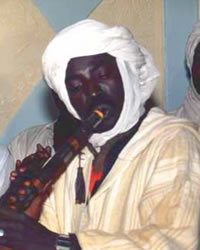Berber, Taznatit in Algeria

Photo Source:
Waran18 - Wikimedia
Creative Commons
|
Send Joshua Project a map of this people group.
|
| People Name: | Berber, Taznatit |
| Country: | Algeria |
| 10/40 Window: | Yes |
| Population: | 13,000 |
| World Population: | 13,000 |
| Primary Language: | Taznatit |
| Primary Religion: | Islam |
| Christian Adherents: | 0.01 % |
| Evangelicals: | 0.01 % |
| Scripture: | Portions |
| Ministry Resources: | Yes |
| Jesus Film: | No |
| Audio Recordings: | No |
| People Cluster: | Berber-Saharan |
| Affinity Bloc: | Arab World |
| Progress Level: |
|
Introduction / History
The Taznatit are one of many groups of Berbers. The Berbers are a North African people group who were conquered by Muslim invaders in the seventh century. The name Berber, which is derived from the Latin word "barbarian," was given to them by the Romans in the third century A.D. Today, the term 'Berber' refers to any native speaker of one of the Berber languages. Today, most Berbers refer to themselves as the Imazighen, which means "men of noble origin." Arab Muslims conquered the Berber homeland between 670 and 700 A.D. However, their influence was limited and the Taznatit and other Berber tribes have managed to sustain and preserve their own language, culture, customs, and social organization. To this day, the various Berber tribes in North Africa straddle their own and the dominant Arabic cultures. Berbers are generally bilingual, speaking both their Berber dialect and Arabic. The Taznatit Berbers speak a dying language; most speak Algerian Arabic instead.
What Are Their Lives Like?
Since the Sahara Desert is a harsh environment, most of the Saharan tribes occupy a number of oases. While there are many similarities between the various Berber groups, their particular lifestyles and quality of life vary according to the region in which they live. The Taznatit Berbers are often noted for their skills in various crafts. Domestic tasks such as weaving and pottery are the main work of the women. The men specialize in woodworking, metalworking, and, more surprisingly, fine needlework. In regard to labor, the men do most of the farming, while the women are responsible for milking and gathering. Taznatit Berber societies can be broken down into three basic units: the community, the district, and the tribe. The community is a political collection of clans; the district is a cluster of communities; and the tribe is a group of districts that are characterized by a common territory, name, and culture. Government at the community level is notably democratic. All authority is vested in an assembly called the jemaa. The jemaa, composed of all adult males, usually meets weekly.
What Are Their Beliefs?
Although they accepted Islam as a new religion, the Taznatit Berbers also maintained their pre-Islamic cultural and ritual traditions. The acceptance of Islam and the adoption of Arabic ways never completely erased Berber culture. Although they are nominally Sunni Muslims, most Taznatit have little knowledge of the practices of the Koran and other dimensions of Orthodox Islam. For example, Berber men often use verses from the Koran as part of their protective amulets. The concept of baraka, or holiness, is highly developed in North Africa. The Berbers believe that many people are endowed with baraka, of which the holiest are the shurifa, or the direct descendants of Mohammed. They also have great respect for marabouts, Muslim holy men who teach and are usually scholars in the Koran.
What Are Their Needs?
Taznatit Berbers need the chance to put their identity in Jesus Christ and enjoy his blessings in this life and in the life to come. Someone needs to go to them with the life-changing gospel.
Prayer Points
Pray for Taznatit Berbers to put their faith and hope in Christ, paving the way for a Disciple Making Movement. Pray for a spiritual hunger among Taznatit Berbers that will lead them to the cross and the empty grave. Pray for workers to go to the Taznatit and find persons of people who will welcome them into their communities with the gospel of peace.